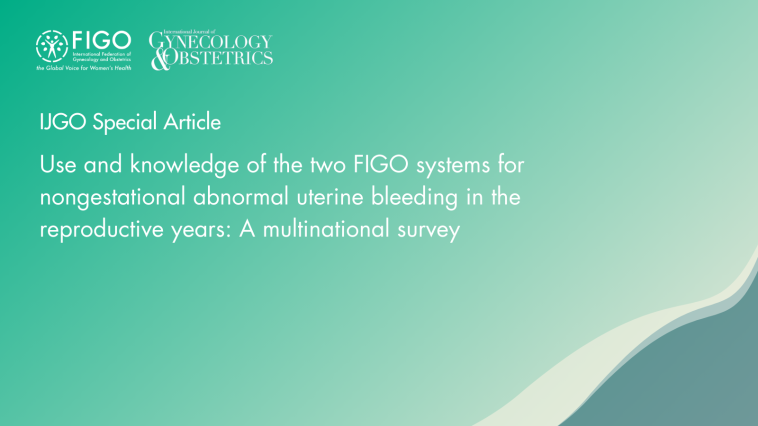Understanding global impact of AUB classification systems

A new special article published in the International Journal of Gynecology & Obstetrics (IJGO) presents findings from a comprehensive global survey of FIGO's abnormal uterine bleeding (AUB) systems.
Members of FIGO's committee on Menstrual Disorders and Related Health Impacts (MDRHI) conducted this extensive electronic survey to assess knowledge and implementation of FIGO's AUB systems among obstetricians and gynecologists worldwide.
The multinational survey, developed specifically to evaluate understanding of both FIGO AUB systems, gathered responses from 1,114 obstetrics and gynecology professionals across 65 countries. Results revealed that nearly 70% of participants were familiar with FIGO's two-part AUB systems, while over 93% recognised the PALM-COEIN classification system specifically.
"The results present that FIGO AUB System 2 (PALM-COEIN) is widely recognised globally, but many trainees lack formal training in menstrual physiology, limiting familiarity with FIGO AUB System 1, essential for identifying AUB causes. Targeted faculty development and improved curricula are recommended to enhance proficiency in these systems."
— Malcolm G. Munro, Author and associate member of FIGO's Menstrual Disorders and Related Health Impacts (MDRHI) Committee
The study revealed regional variations in training and implementation, with particularly strong adoption in Latin America, North America, and Asia-Oceania. However, European respondents reported lower exposure to formal education on the systems, with approximately 40% indicating they had not received specific training on menstrual physiology and AUB.
Importantly, the research showed that trainees whose instructors actively used the FIGO systems demonstrated higher proficiency scores, underlining the crucial role of faculty engagement in medical education. The study recommends targeted strategies focusing on faculty development and enhanced educational curricula to improve awareness and proficiency in using these standardised systems.
This comprehensive survey marks a significant step in understanding the global implementation of FIGO's AUB classification systems and provides valuable insights for improving medical education and standardised communication in women's healthcare worldwide.